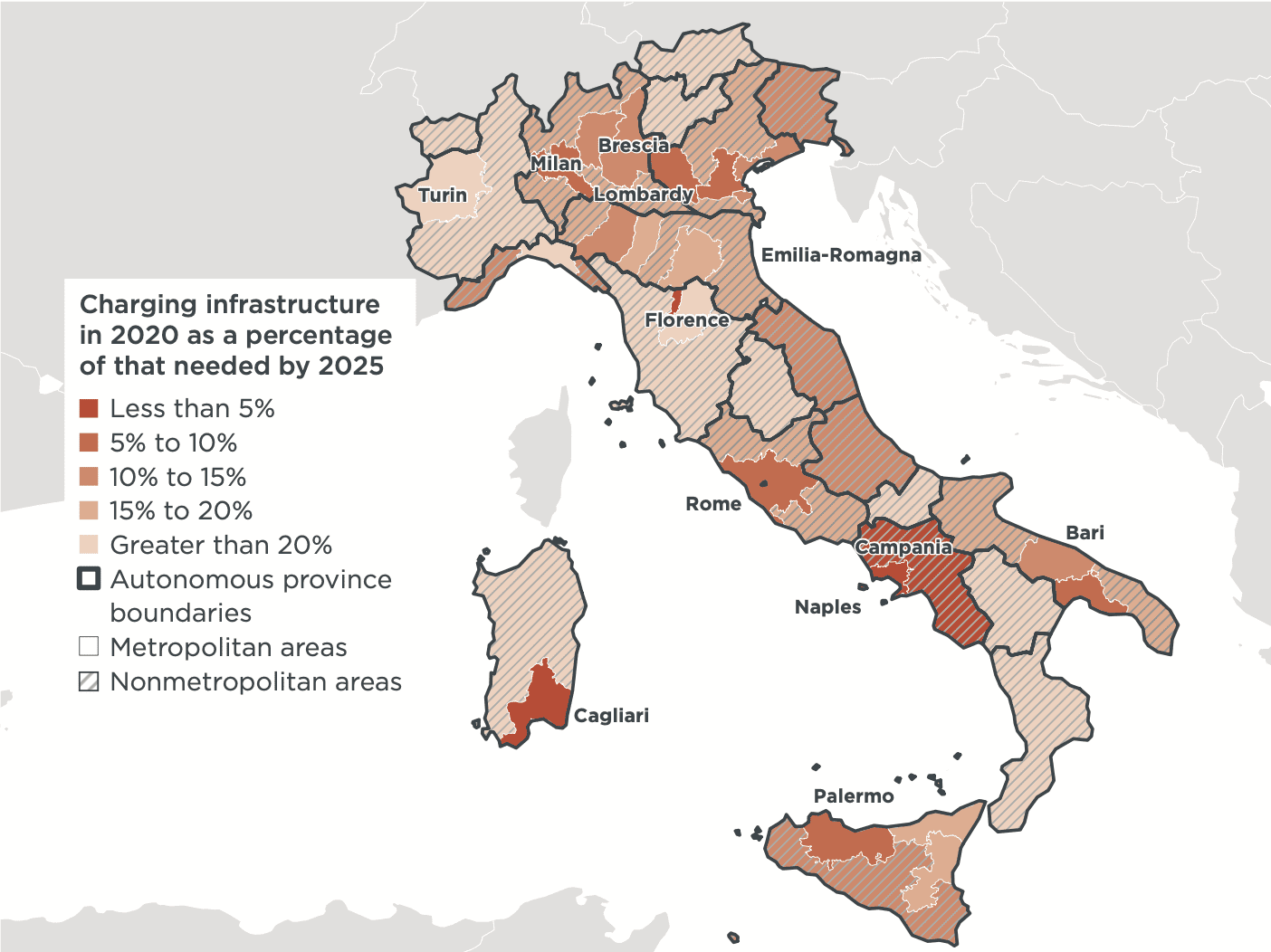Regional charging infrastructure requirements in Germany through 2030
Working Paper
Preparing Italy’s charging infrastructure for rapid vehicle electrification
The electric vehicle share of Italy’s passenger car market has grown rapidly since 2019, and robust growth is expected to continue. To accommodate this growth, Italy’s charging infrastructure will need to expand. In this working paper we estimate the number of home, work, public, and fast chargers needed in Italian metropolitan and nonmetropolitan areas in the 2021–2030 period to serve passenger cars, which account for most new vehicle registrations and vehicles on the road in Italy and across Europe. Light commercial vehicles and motorcycles are excluded from the analysis.
The paper generates the following high-level findings:
Continued growth is needed for all charging types. Metropolitan areas in particular require more normal work and public chargers as well as fast chargers. For electric vehicles to reach a sales share of 68% of all vehicles by 2030, approximately 380,000 normal speed chargers (public and workplace) and 16,000 fast chargers are needed. Metropolitan areas have only 9% of the charging needed by 2025 compared to 14% in non-metropolitan areas. Charging will need to grow 50% per year until 2025 in cities and 38% per year in nonmetropolitan areas. Our scenarios assume that strong growth in home charging will be needed as well, requiring government and utility support in funding and coordinating installations. More than 50% of electric vehicle owners live in apartments by 2030, suggesting that particular focus be given to installing overnight charging at or near apartments.
Charging infrastructure costs will be significant but decline per vehicle over time. The total cost estimate for chargers installed between 2021 and 2030 is €3.2 billion for non-home charging and €7.5 billion for home charging. However, for each car added, the marginal cost for non-home chargers needed to support that car decreases from €1,000 in 2021 to €400 in 2030. The declining cost is due to increasing utilization over time for away-from-home chargers, economies of scale at increasingly large charging installations, and a reduction in hardware cost.
International examples provide guidance on successful infrastructure strategies and needed investment. The model for Italy suggests that a per capita investment of €7 per year in 2021 is needed, rising to €39 per year in 2030. Peer countries with more developed charging networks, like Germany and the U.K., are already providing public charging investments of about €5 per capita annually through a number of popular programs, providing examples for Italy. Not all the investment need come from the government, however, and a cost share has been instituted for most government charger programs in the UK and Germany. A very popular program in Germany targeting homeowners and private business received requests for 620,000 charging points totaling €530 million. In the UK, more than €1 billion is being spent on fast charging along highways over 4 years, and over €100 for on-street charging.

Figure. Percent of non-home charging infrastructure installed as of 2020 that will be needed by 2025
